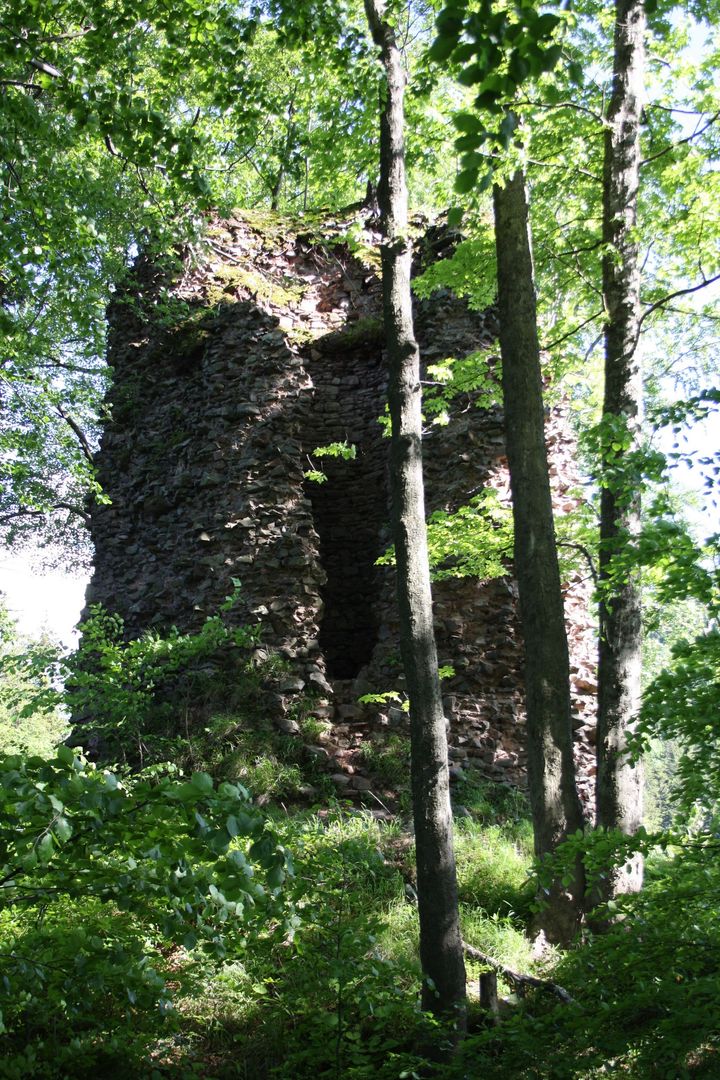Radosno Castle
7.25

Overview
Radosno Castle, located in the northwestern part of the Góry Suche (Dry Mountains) range in the Central Sudetes, is the ruin of a 15th-century fortress that played significant strategic and defensive roles. To this day, fragments of a cylindrical defensive tower and remnants of a residential building have been preserved. The castle, built from local melaphyre, was likely constructed in the second half of the 13th century as a defensive stronghold overlooking a medieval trade route and formed part of a local line of border fortifications. Its cylindrical tower, once surrounded by wood-and-earth fortifications, stood on a hill near the southern bank of the Suchawa River. Over the years, during the 14th century, the castle was expanded to include a defensive wall and residential and farm buildings, creating a courtyard covering an area of 300 m². In the 15th century, the castle became a hideout for robber knights, which led to its destruction by the citizens of Wrocław in 1443. Subsequent attempts at reconstruction were undertaken by various noble families, but ultimately, in 1497, the castle was destroyed by the forces of the Czech King Vladislaus II Jagiellon and has remained in ruins ever since. Near the castle lies the "Andrzejówka" Shelter, as well as interesting tourist and cultural attractions such as the Orthodox church in Sokołowsko and the wooden church in Rybnica Leśna, located within the protected Sudety Wałbrzyskie Landscape Park. It is also worth noting that Radosno Castle, although partially destroyed, remains an important element of local history and regional culture, bearing witness to many events related to power and conflict in these lands.
Location
2025 Wizytor | All Rights Reserved